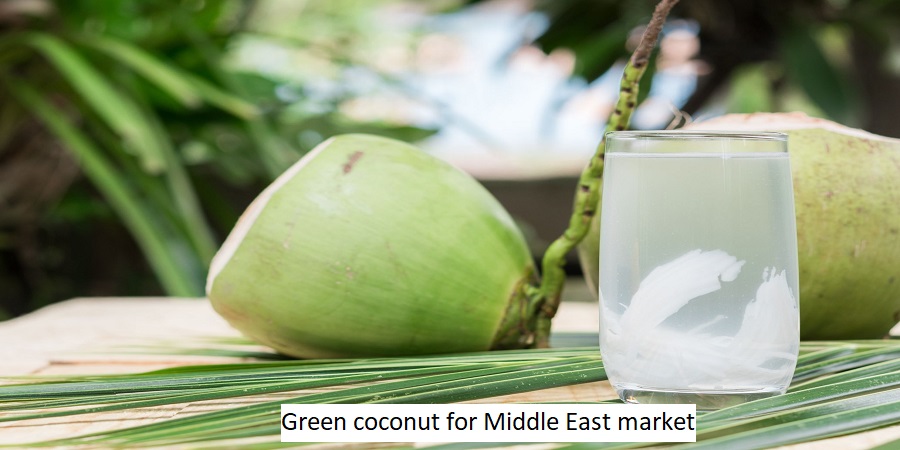
Green coconut for Middle East market daivietinternational.com Green coconuts, the unripe stage of the coconut fruit, are increasingly gaining attention for their distinctive characteristics and health benefits. Typically harvested while still immature, these vibrant green fruits are known for their refreshing coconut water and soft, jelly-like meat. Unlike their mature counterparts, which develop a hard shell and fibrous husk, green coconuts maintain a more palatable texture and a higher moisture content, making them an appealing option for a variety of culinary and beverage applications.
Introduction to Green Coconuts
Nutritionally, green coconuts are celebrated for their low calorie content and high hydration properties. The water extracted from these fruits is not only refreshing but also rich in electrolytes, making it an excellent natural beverage, particularly in hot climates. The soft flesh, often referred to as coconut jelly, is packed with essential nutrients, including vitamins, minerals, and healthy fats, contributing to a balanced diet. These health advantages have resulted in a growing demand for green coconuts in global markets such as Southeast Asia, the Americas, and increasingly, Europe.
The versatility of green coconuts extends beyond hydration. In addition to being consumed raw, they are incorporated into smoothies, desserts, and savory dishes, showcasing their culinary potential. As organic and health-conscious trends continue to rise, the appeal of green coconuts is expected to broaden, leading more chefs and consumers to explore innovative ways of using this unique fruit. Considering the opportunities for procurement and distribution in the Middle East market, green coconuts may serve not only to satisfy nutritional needs but also as a refreshing alternative for beverage enthusiasts and culinary creatives alike.
Market Demand and Trends in the Middle East
The demand for green coconuts in the Middle East has been witnessing a significant uptick in recent years, largely driven by a growing health consciousness among consumers. With an increasing emphasis on wellness and nutrition, more individuals in the region are seeking alternatives to traditional beverages, paving the way for products that offer both hydration and health benefits. Green coconut water, in particular, has emerged as a favored choice due to its natural electrolytes and low-calorie profile.
Market trends reveal a distinct shift towards natural and organic offerings. Consumers are becoming more discerning, favoring products with minimal processing and those that are free from artificial additives. This inclination towards organic items is not just a passing trend; according to industry reports, the organic food market in the Middle East is projected to grow at a compound annual growth rate (CAGR) of over 10% in the coming years. As such, suppliers of green coconuts have an opportune moment to position their products strategically to align with this demand.
Additionally, the rise of coconut-based products, such as coconut oil, flour, and milk, indicates a diversification in consumer preferences. These products are now commonplace in health-oriented diets, further bolstering the market for green coconuts. Statistical insights reveal that the market for coconut products has seen an increase of approximately 14% in the last year, suggesting a robust acceptance and demand among Middle Eastern consumers.
While the potential for growth in the green coconut market appears promising, suppliers must navigate certain challenges. Import regulations, competition from established beverage brands, and the logistics of distribution in a region characterized by diverse markets can pose hurdles. Nevertheless, with strategic planning and a keen understanding of consumer behavior, suppliers can tap into the burgeoning market for green coconuts in the Middle East.
Strategies for Entering the Middle Eastern Coconut Market
Entering the Middle Eastern market with green coconuts requires a comprehensive understanding of the region’s unique consumer preferences and regulatory landscape. First and foremost, businesses must identify appropriate distribution channels. This could involve establishing direct supply lines to local grocery chains and supermarkets, utilizing both physical and online retail platforms. Exploring partnerships with established distributors can also facilitate an efficient market entry, leveraging their local knowledge and networks.
Marketing strategies play a critical role in capturing the attention of Middle Eastern consumers. Tailoring promotional efforts to resonate with local cultural values and lifestyle preferences is essential. For instance, emphasizing the health benefits of green coconuts, such as hydration and nutritional value, can appeal to health-conscious consumers. Furthermore, integrating traditional marketing methods with digital strategies, including social media campaigns that highlight recipes and usage tips for green coconuts, can enhance brand visibility and consumer engagement.
Partnering with local retailers can provide significant advantages. Local stores often have established relationships with consumers and can facilitate quicker acceptance of new products. Engaging local influencers to endorse green coconuts through various platforms can also help create a buzz. In addition to networking with retailers, collaborating with food service businesses, such as cafes and restaurants that focus on healthy eating, can pave the way for introducing green coconuts to broader audiences.
Compliance with regulations and certifications is another vital aspect for successful market entry. The Middle East has specific food safety and quality standards that businesses must meet. Familiarizing oneself with the local food regulatory framework, including necessary licenses for importing and selling food products, will ensure that operations comply with local laws. This diligence not only aids in seamless market entry but also fosters consumer trust, critical for long-term business success in the region.